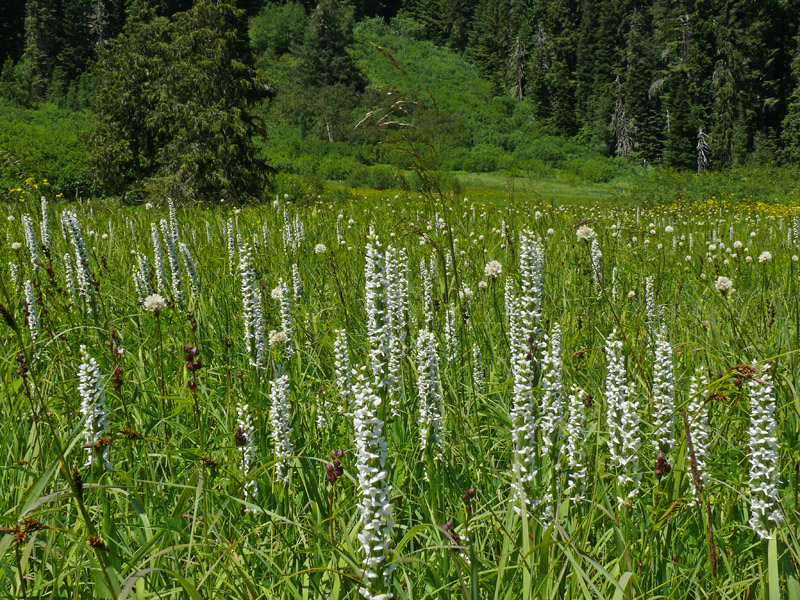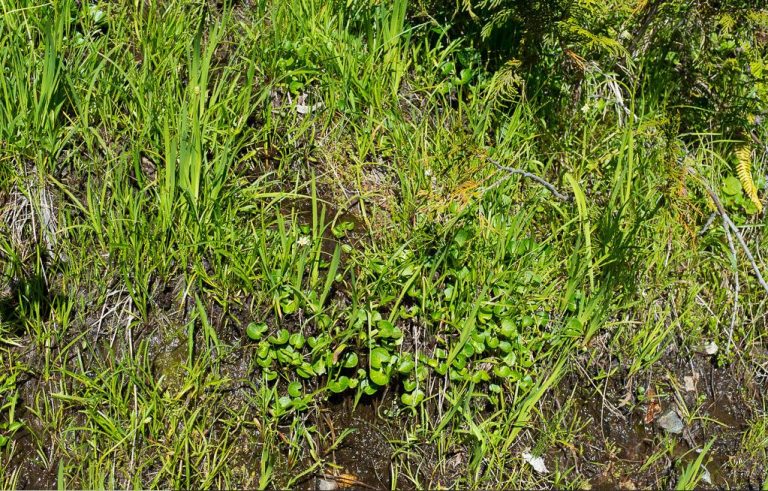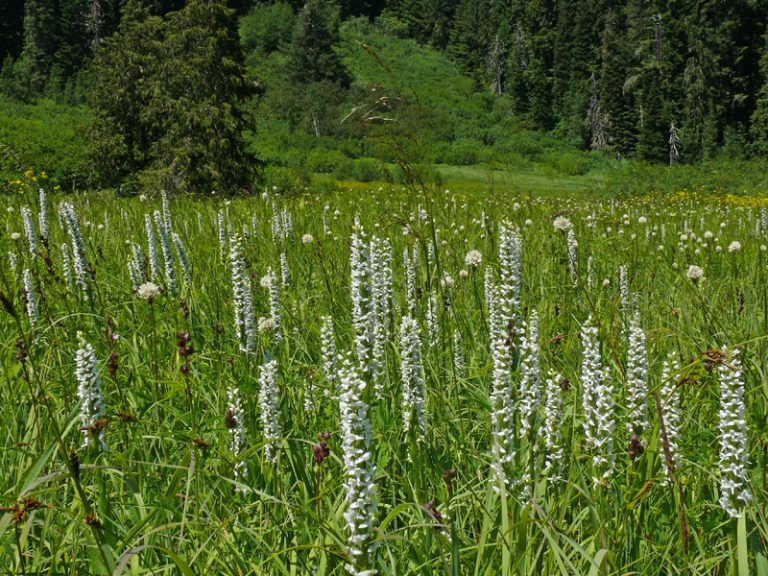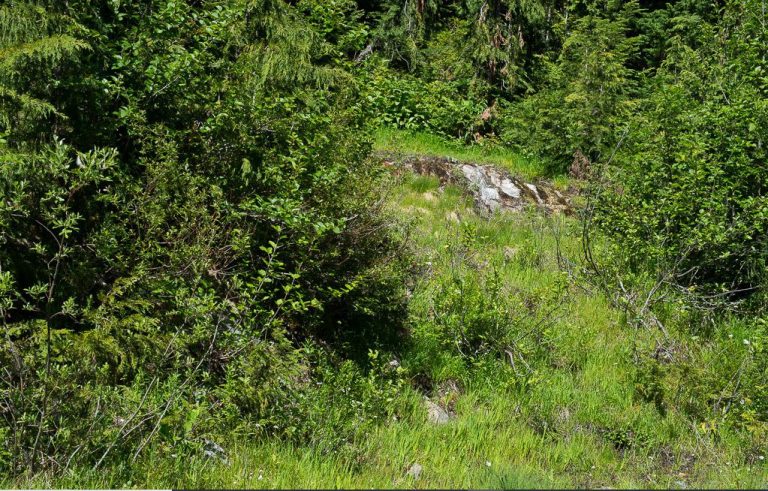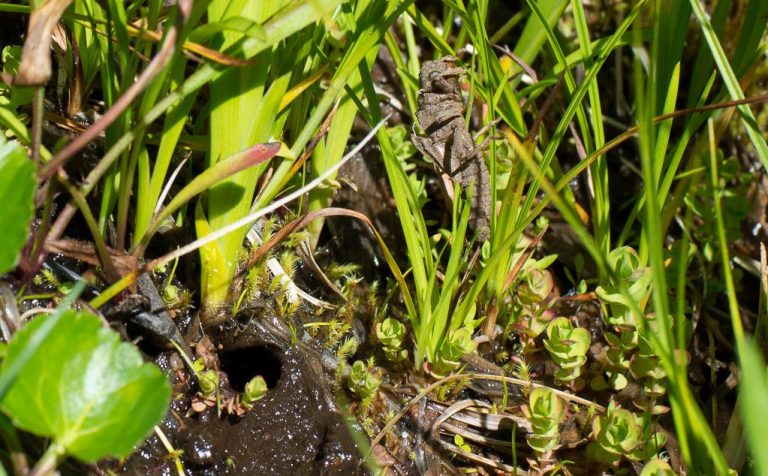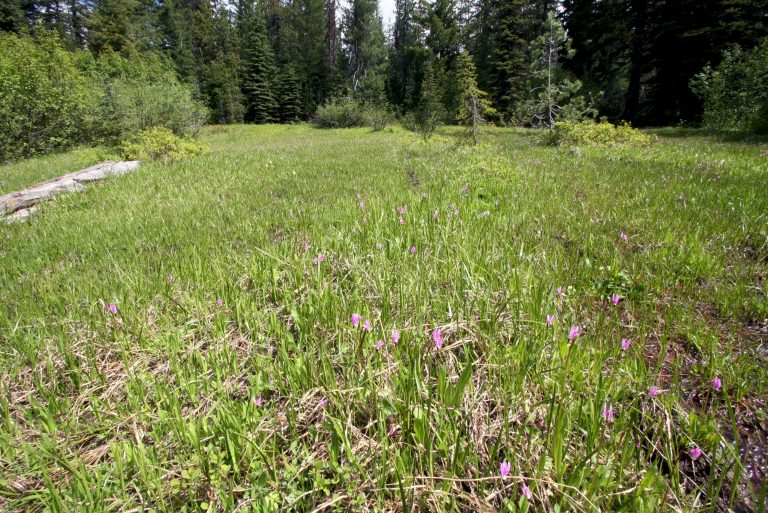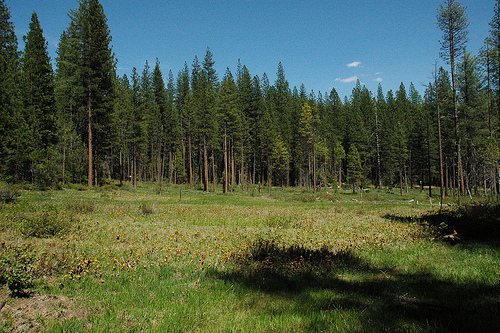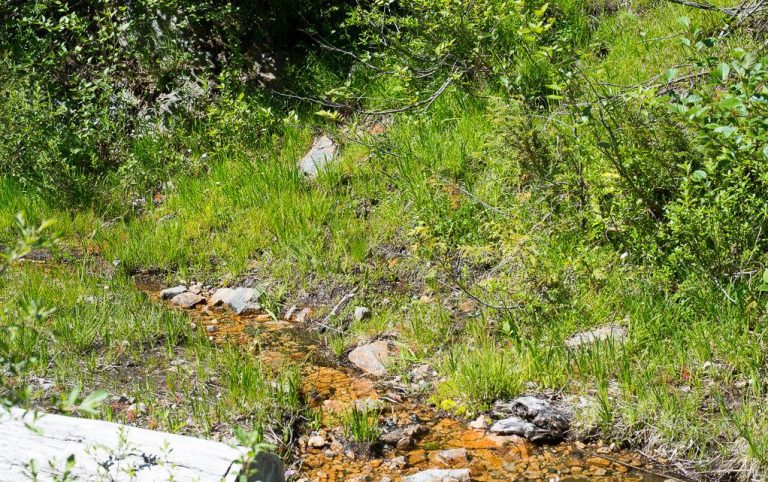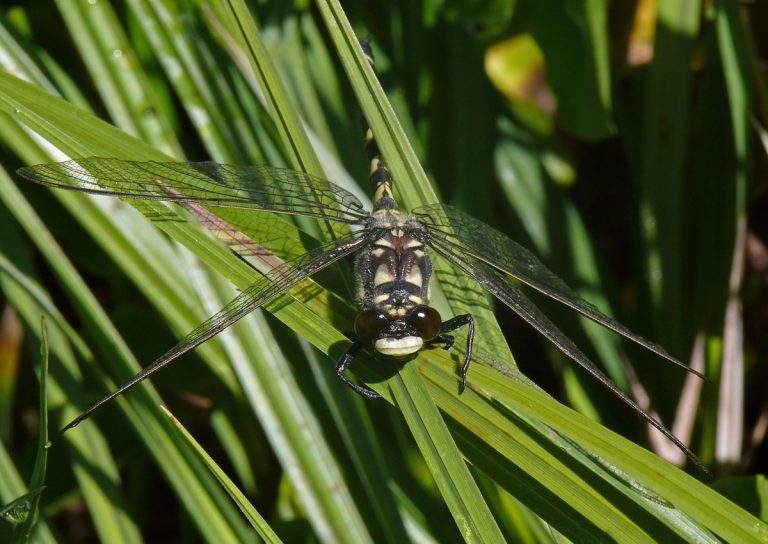Overview
The Black Petaltail (Tanypteryx hageni) is unique among northwest dragonflies in its choice of habitat. While all other northwest dragonflies lay their eggs–and the larvae develop–in either streams or ponds, the Black Petaltail, for the most part, avoids both. Instead, the petaltail seeks out the specialized habitat needed for its slow-developing larvae: perennial boggy seeps or fens. Several specific features appear to make habitat suitable for the long five-year larval growth period: 1) perennial, 2) shallow (often only millimeters to 1 cm deep), 3) slowly flowing water, 4) over a boggy/mucky vegetated substrate. The water supply must be perennial for the larvae to survive their five-year development period. The water needs to be shallow to allow the larvae to access their terrestrial hunting grounds. The purpose of moving water vs. stagnant is unclear, but may be associated with a consistent source of water or high water quality. The combination of mucky substrate with plenty of organic material and vegetation creates the perfect burrowing conditions: soft enough to dig through, but with structural support of dead organic matter and roots. Petaltails typically do not occur in stagnant bogs with no water flow, wet seeps that are mostly rock, or faster-moving water; however, in each of these cases suitable habitat is sometimes nearby where proper water flow, depth, and substrate are present.
The following sections describe four different settings where habitat of the Black Petaltail has been known to occur. I am requesting that field-going personnel–hydrologists, botanists, biologists, silviculturists, road crews, everybody–consider these descriptions and email me with coordinates (lat/lon or UTMs) and a short description of any sites that sound like they could be habitat for this species. I am compiling potential sites on a separate page: Black Petaltail in the Umpqua Basin: Data Page. You can look there to see if you have a completely new site, or your site is already listed, or if you might be able to add some detail or a specific location when an entire meadow complex is mentioned without further detail.
Meadow Seeps and Sloping Wetlands
This is probably the most frequently noted habitat where the petaltail is found. The featured photo in this post is one of the more beautiful examples of this. Some sites have large areas of suitable habitat, but in many cases the suitable seepy/mucky habitat is found in a small area within a larger mountain meadow. These sites typically have abundant wildflowers in the summer, and are mucky and wet in the area where the petaltails occur.
Flowing Bogs and Fens
These sites typically do not have much gradient, but nevertheless have a thin layer of moving water. They often contain sphagnum mosses and/or carnivorous plants.
Streamside Swamps and Mucky Habitat
This is a rarely observed or mentioned habitat of the Black Petaltail, probably because they are infrequently visited by Pacific Northwest petaltail seekers and because there is often a greater amount of vegetative cover, making them less noticeable from the ground or satellite and more difficult to access. I suspect that this habitat occurs most often along small (1st to 3rd-order) streams (e.g. 1-2 m wide) within steep watersheds, but with small, 5- to 10-m wide floodplains where boggy habitats occur–perhaps where the flow of smaller streams spreads out over mucky substrates before entering the main stream channel. I do not have a photo of this habitat, but I hope this description might allow you to check out a few potential sites that sound similar. Walking gravel roads that closely parallel such streams may be a good way to detect the species, so identifying such locations would be useful for this project.
Road Cut Bank Seeps
I’m not aware of larval burrows being confirmed in seepy road cut banks, but adults have sometimes been located in this habitat, and successful reproduction in this habitat is a possibility and they should be checked out if you see one while driving roads. In addition, sometimes these roadside seeps are a clue that suitable habitat may be nearby, either higher up the slope, or somewhere below. Mountain roadside ditches with flowing water are sometimes also colonized or visited by the Pacific Spiketail (Cordulegaster dorsalis), Grappletail (Octogomphus specularis), or a species of damselfly. I don’t have a photo of this habitat either, but I’m sure you have observed such sites.
Call to Action
I hope the above descriptions and photos have given you a “search image” for Black Petaltail habitat. If you know of sites that seem to fit the description, please email me (matthewghunter@gmail.com) with the location (GPS, lat/lon, or UTM coordinates) and a short description. Also, see if the site is already on the map or in the database and if you might be able to add some detail or a more specific point.
Be sure you’ve read the introductory post on this study and signed up for updates at the bottom of this post: A Study of the Black Petaltail in the Umpqua Basin: Introduction and Volunteer Signup. Thank-you! I’m looking forward to working with you and together learning more about this unique dragonfly and its habitat!
Sign Up
If you would like to participate in this project either by helping me identify potential sites or searching for Black Petaltails in beautiful mountain meadows in early summer of 2019, or both, please sign up with the form below so I can provide more information and updates. (Note: as you scroll down you may also see a form pop up where you can sign up to receive email notification of all my blog posts–I hope you’ll do that too.
